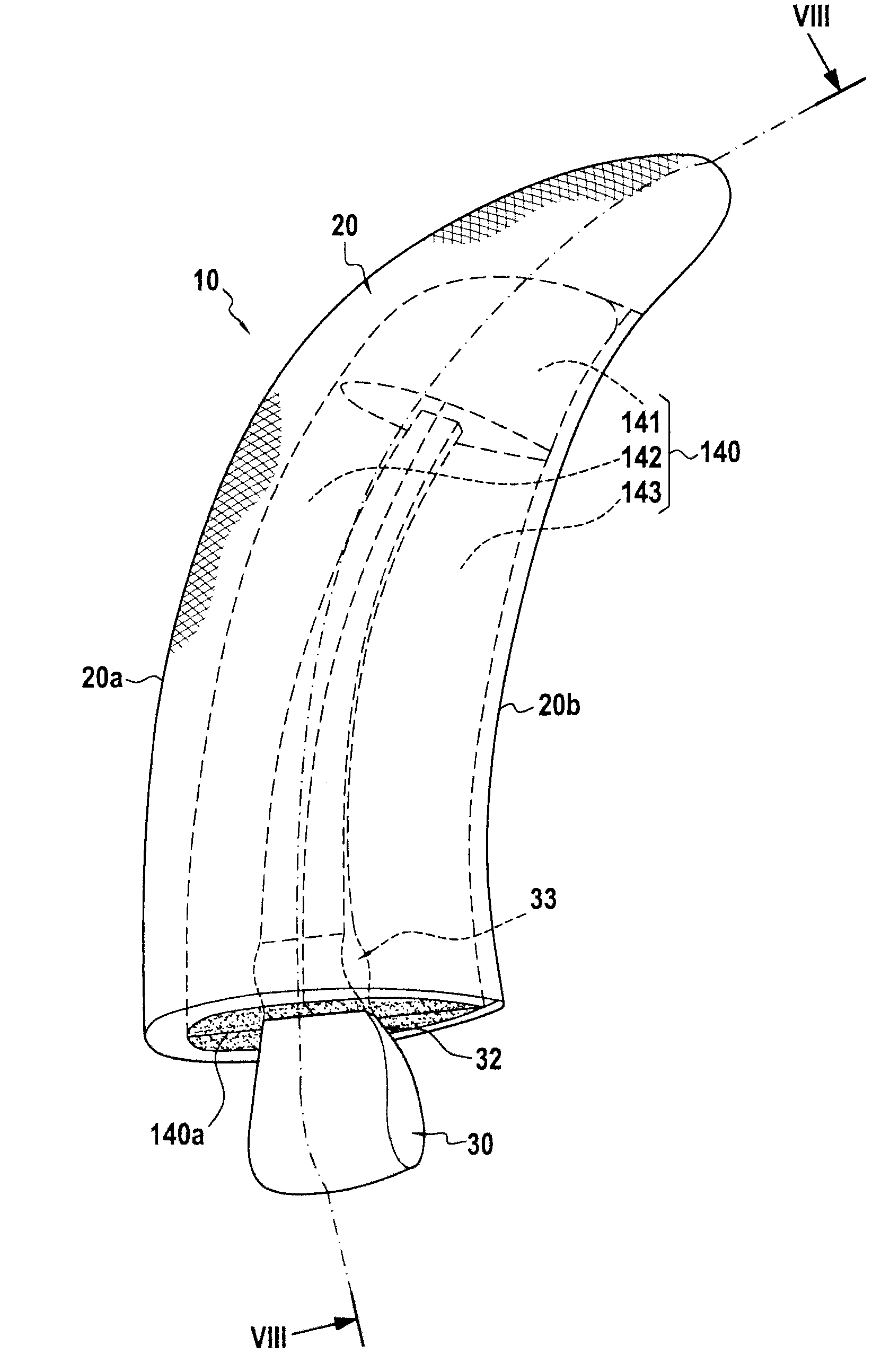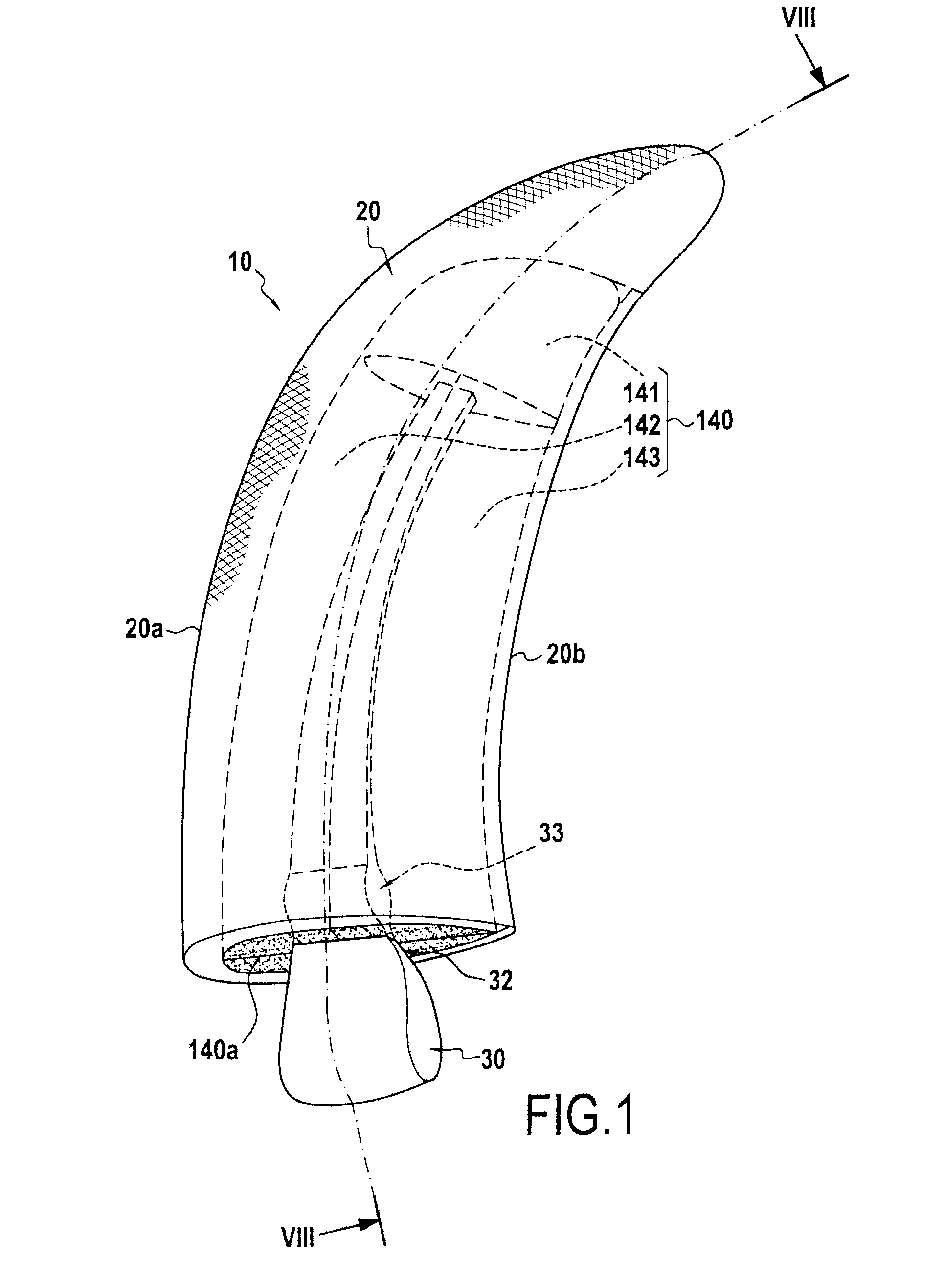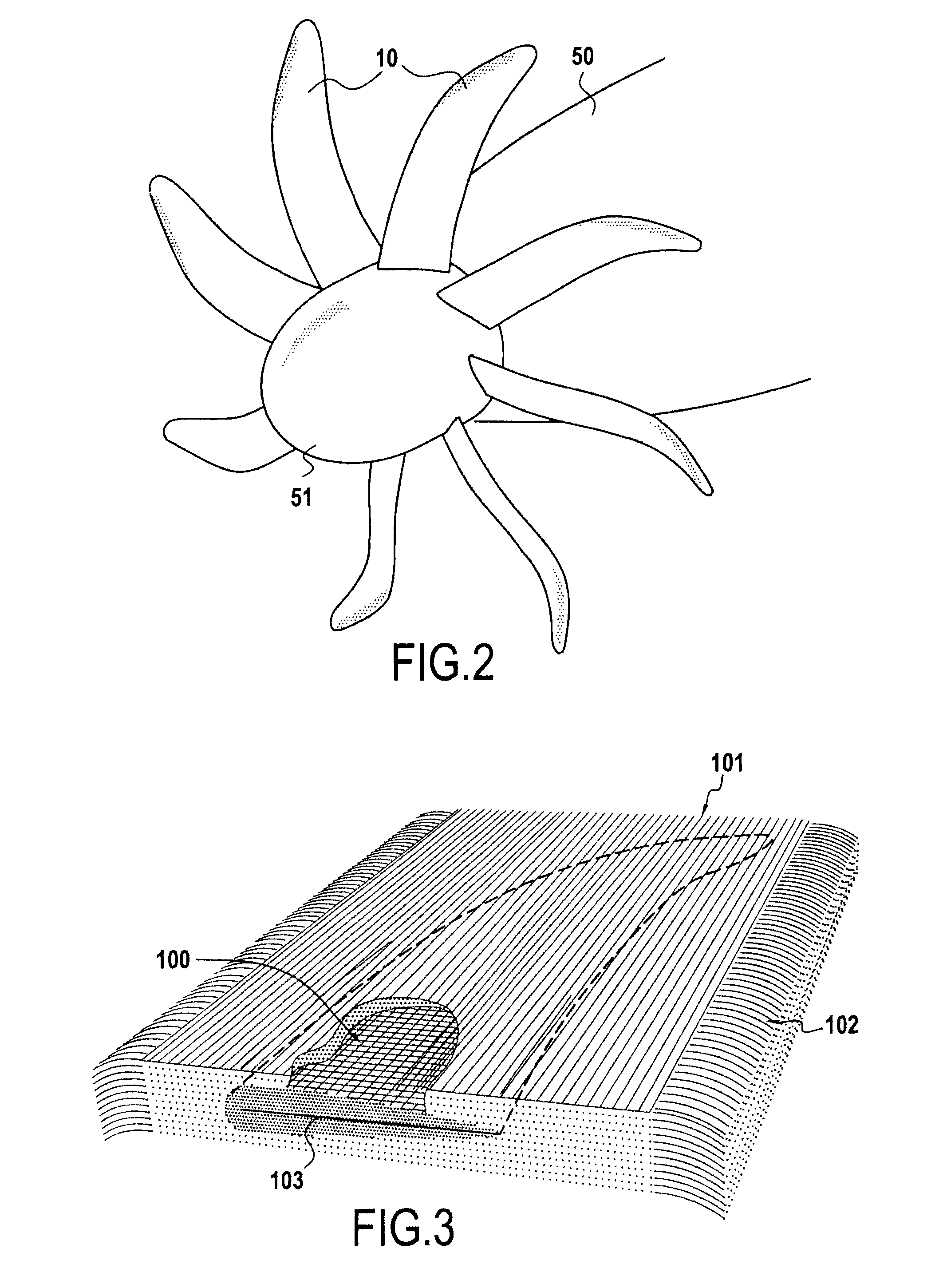Aircraft propeller blade
a propeller blade and aircraft technology, applied in the direction of machines/engines, other domestic objects, transportation and packaging, etc., can solve the problems of large weight, long time consumption, and difficult technique, and achieve the effect of small overall weigh
- Summary
- Abstract
- Description
- Claims
- Application Information
AI Technical Summary
Benefits of technology
Problems solved by technology
Method used
Image
Examples
Embodiment Construction
[0047]The invention applies in general to various types of propeller blade used in the engines of aircraft such as airplanes or helicopters. The invention finds an application that is advantageous but not exclusive in propeller blades of large dimensions that, because of their size, present considerable weight and have a significant impact on the overall weight of the engine of the aircraft.
[0048]FIG. 1 shows a propeller blade 10 for mounting on an airplane turboprop, which propeller blade comprises, in well-known manner, an airfoil-profile structure 20 that is to form the airfoil portion of the blade, a root 30 formed by a thicker portion, e.g. having a bulb-shaped section extended by a tang 32. The airfoil-profile structure 20 presents, in cross-section, a curved profile of thickness that varies going from its leading edge 20a to its trailing edge 20b.
[0049]As shown in FIG. 2, the blade 10 is mounted on a rotor 51 of a turboprop 50 by engaging the root 30 in a housing formed in t...
PUM
| Property | Measurement | Unit |
|---|---|---|
| Thickness | aaaaa | aaaaa |
| Shape | aaaaa | aaaaa |
| Weight | aaaaa | aaaaa |
Abstract
Description
Claims
Application Information
 Login to View More
Login to View More - R&D
- Intellectual Property
- Life Sciences
- Materials
- Tech Scout
- Unparalleled Data Quality
- Higher Quality Content
- 60% Fewer Hallucinations
Browse by: Latest US Patents, China's latest patents, Technical Efficacy Thesaurus, Application Domain, Technology Topic, Popular Technical Reports.
© 2025 PatSnap. All rights reserved.Legal|Privacy policy|Modern Slavery Act Transparency Statement|Sitemap|About US| Contact US: help@patsnap.com



